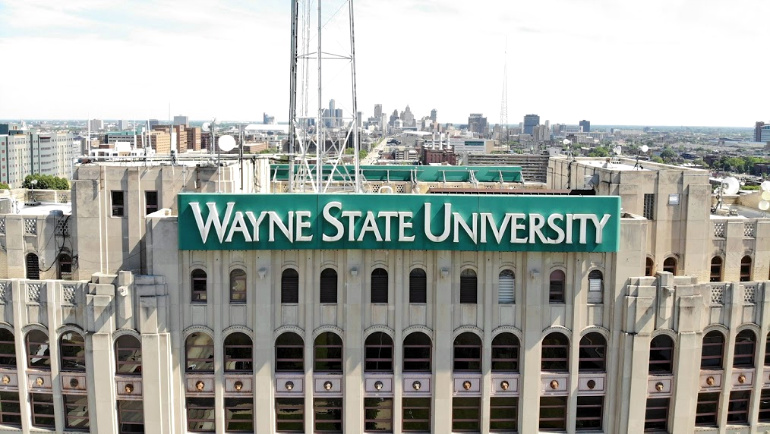
As the COVID-19 pandemic descended upon America’s cities, much of the nation’s workforce moved from familiar office settings to working from home in an effort to prevent the spread.
Now, as stay-at-home orders are gradually lifted throughout the country, including Michigan, some employees will begin the process of returning to their work environments and daily commutes.
In advance of employees’ return to campus, Wayne State’s Facilities, Planning and Management (FP&M) team has been taking steps to ensure the safety of the university’s students, faculty and staff.
Early on, as part of the campuswide reopening process, the facilities subcommittee was formed with the charge of ensuring a reliable, safe and sustainable environment for the entire campus community. To do this, the subcommittee members — representing a wide swath of Wayne State employees — are putting together a plan they refer to as the “playbook,” which will include the necessary steps to welcome employees back to a safe campus.
The playbook refers to all facilities-related components, including custodial services, space management, parking, transportation and construction services. It is based on industry standards and governmental regulatory requirements, including the new COVID-19 OSHA standard, CDC standards and the governor's recent executive order, with safeguards to protect Michigan workers.
Currently, in preparation for the return of employees and students, a sampling of measures planned include:
- Personal protection equipment (PPE) distribution and workforce check-in established for FP&M employees at sector locations.
- High-touch-point cleaning has begun across campus, per CDC guidelines. High-touch-point areas include such areas as building entrances, card swipe/keypads, stairwell entrance/exit doors, stairwell railings and elevator buttons.
- A product known as NanoSeptic is being applied to doors and buttons, elevators, and control-type buttons.
- Disinfecting parking equipment at entrances and exits.
- Touchless restroom equipment, including motion sensor faucets and touchless paper towel dispensers.
- Hand-sanitizing dispensers located in common areas, main building and elevator lobbies.
- Disinfectant products suitable for surfaces and electronic equipment.
- Floor clings with reminders to manage social distancing.
- Signage in elevators noting two passengers limit.
- Implementing administrative/office, restroom social-distancing plans.
- Modifying shuttle service to accommodate social distancing.
- Space analyses to identify classroom and lab space that can accommodate safe distancing.
- Guidelines and communications to support social distancing, including:
- A maximum of two passengers on elevators.
- Entry, exit and hallway directional signs to guide building traffic.
- Phased return of construction/custodial workers.
- Plexiglass partitions to facilitate safe distancing.
“The pandemic has really turned a typical day upside down for FP&M,” said Rob Davenport, facilities subcommittee chair and associate vice president for facilities, planning and management. “As we work to make the campus safe for occupants, we are literally implementing new operational plans during development of the same. While it is not at all unusual for FP&M to manage significant events, most significant events are resolved in hours, perhaps days for an extreme situation.
"The pandemic, however, is an ongoing situation that is now leading into a new normal," Davenport continued. "This new normal requires a proper balance of creativity and compliance, which is a challenge when an element of urgency is incorporated. Fortunately, we have an incredible team within FP&M, as well as the entire campus community. Together, we will reach our goal to provide a safe, sustainable and reliable built environment. After all, Warrior Safe is Warrior Strong.”
More details will be available as the planning and implementation process continues to evolve.
